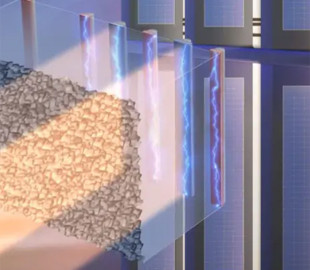
Until now, with the help of laser engraving, it was not possible to make modules with higher efficiency 22.5%, but scientists have found a way out.
Chinese solar module manufacturer Longi has developed a back contact (BC) heterojunction solar cell with an energy conversion efficiency of 27.3% under normal lighting conditions, much higher than analogs on the market. The inventors described the design in an article published in the scientific journal Nature.
The company's researchers explained that laser patterning is currently the cheapest method of creating BC cells, but so far it has not been possible to produce devices with an efficiency higher than 22.5%. Moreover, this method may lead to laser-induced cell damage and reduced open-circuit voltage and fill factor because it causes degradation of the amorphous passivation contact or crystalline silicon interface.
In their work, Longi engineers used an advanced laser contact optimization process that has a total effective processing time of approximately one-third less than mainstream technologies such as PERC and TOPCon. To eliminate the risk of cell damage, they applied three laser patterning steps, known as P1, P2, and P3, to create a counter-comb n/p polarity by selectively removing the N-contact, P-contact, and indium tin oxide (ITO) layers, respectively .
Steps P1 and P3 aim to isolate the back contact layers of adjacent cells, while step P2 creates an electrical path between the back contact of the cell and the front contact of the adjacent cell. The P3 step, in particular, is often the source of undesirable effects such as back contact delamination, delamination, or poor electrical insulation due to residues left in the groove.
200% Deposit Bonus up to €3,000 180% First Deposit Bonus up to $20,000During the tests of the new technology, the cylindrical laser beam worked in two modes. The overlapping mode used in P1 and P3 completely removed the layer, while the single-shot mode used in P2 created partial rather than full contact between the hydrogenated amorphous silicon film and the ITO layer.
The team created photovoltaic cell with an area of 243 square centimeters with a Czochral n-type monocrystalline silicon wafer doped with phosphorus M6. She applied dense passivation contacts using plasma-enhanced chemical vapor deposition (PECVD) at 240°C. A pulsed green picosecond laser with a spot of 250 μm was used to remove the films.
“This cell can be used in all application scenarios of silicon-based photovoltaic systems,” — said Chaowei Xue, director of Longi Solar's PV Magazine, noting that the device is based on tight passivation contacts that contain less hydrogen than conventional contacts used in BC cells, which he says reduces parasitic absorption of light and improves passivation.
Longi also created a device with a lower indium content, achieving an efficiency of 26.5%. According to the researchers, they also achieved an efficiency of 26.2% for HBC solar cells metallized with a low-temperature screen-printed copper (Cu) paste. The proposed production technology is designed to separate the use of rare indium and precious silver from the element's heterojunction technology, as PERC and TOPCon are difficult to produce in large quantities due to the need for silver contacts.
Longi did not specify whether these results were confirmed by an independent third-party organization .

